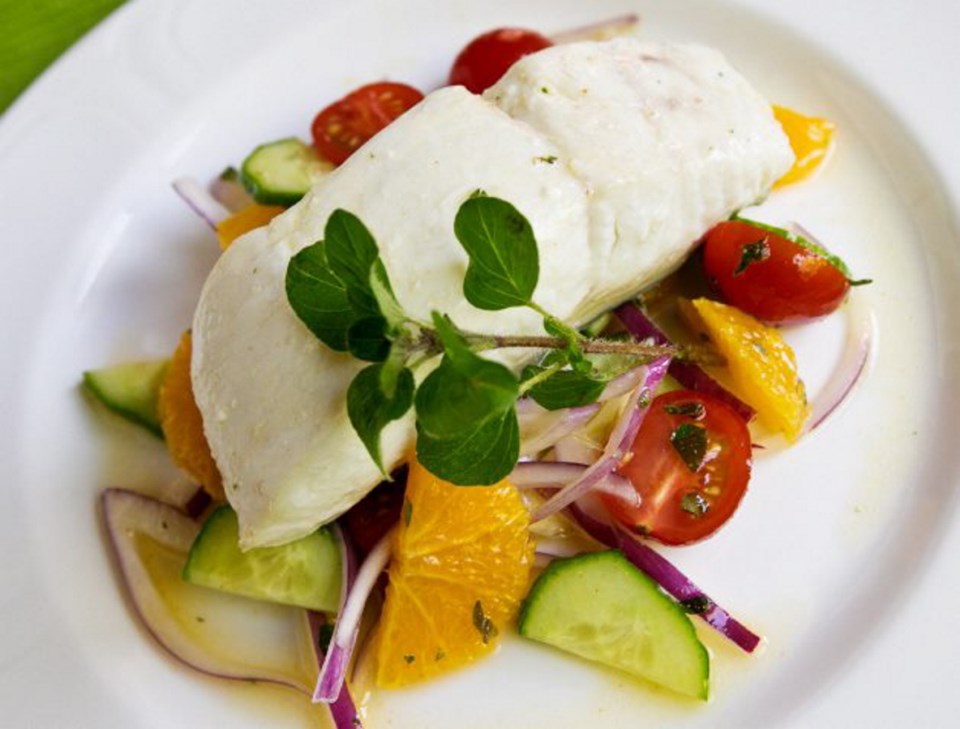 Dear Eric: My family is very fond of the lovely onion. Why do some recipes call to salt them first? Do you have any suggestions for recipes using onions?
Dear Eric: My family is very fond of the lovely onion. Why do some recipes call to salt them first? Do you have any suggestions for recipes using onions?
Barbara Shea
Dear Barbara: Yes, I agree, onions are lovely and a key or complementary ingredient in countless recipes. But why would some of those recipes ask you to salt them first?
After some thorough research, I discovered two reasons.
The first has everything to do with trying to mellow the sulfur compounds found in onions, particularly yellow onions, but even in milder red onions.
After cutting an onion, those compounds can sometimes develop a very intense — almost harsh — taste that can even be too “oniony” for onion-lovers. If you’re using an onion with those qualities raw in a salad, or even on a burger, that potent onion taste can overwhelm everything else in the dish you’re making.
In Michael Rulman’s informative book, The Elements of Cooking, he says raw onions can be soaked in salted water to substantially reduce those harsher qualities. I tried the technique in today’s recipe for baked halibut with orange, tomato, onion and cucumber salad and it worked well. The salad has a nice, raw onion flavour, but not an overpowering one that might negatively affect the milder taste of the fish and other salad ingredients.
The second instance I noticed onions being salted was before pickling. Most commonly that was done with small, peeled pearl onions, but sometimes sliced, larger onions were also dry-salted (simply tossed with salt) or brined (put in a saltwater solution).
According to a few sources, salting the onions in this way before pickling draws moisture out of them and softens them slightly. This allows the vinegary pickling mixture to better penetrate them and improves texture once canned and cooled.
Beyond my halibut recipe, Barbara, I’ve also published a recipe for a classic comfort food, Swiss steak, that’s loaded with onions. No pre-salting of onions required for it, as the onions mellow in flavour as they slowly cook.
Baked Halibut Fillets with Orange, Onion, Tomato and Cucumber Salad
Easy to prepare, quick-to-cook halibut served with a light, colourful and flavourful salad.
Preparation time: 25 minutes, plus soaking time
Cooking time: 12 to 15 minutes
Makes: 4 servings
For the salad
1/2 medium red onion, thinly sliced
3/4 tsp salt
• cold water
1 Tbsp fresh lemon juice
1 Tbsp fresh orange juice
2 Tbsp olive oil
2 to 3 Tbsp chopped fresh oregano, mint or basil
1/4 tsp ground cumin
• salt and white pepper to taste
1/3 medium English cucumber, halved lengthwise and thinly sliced
2 medium oranges, peel and pith removed, flesh halved and thinly sliced
12 cherry tomatoes, each halved
Place the sliced onion in a small to medium bowl and toss with the 3/4 tsp salt. Pour in enough cold water to just cover the onions.
Let the onions stand 15 minutes, stirring one or twice, and then drain well. Rinse the onions under cold water, drain well again and they are ready for the salad.
To make the salad, place the juices, oil, oregano (or mint or basil), cumin, salt and pepper in a medium bowl. Add the onion, cucumber, orange and tomatoes and toss to combine. Cover and refrigerate salad until needed.
Salad can be made an hour or two before needed.
For the fish
4 (5 oz.) halibut fillets
1 Tbsp olive oil
1 Tbsp fresh lemon juice
1 Tbsp fresh orange juice
• salt and white pepper to taste
Preheat the oven to 425 F. Set the halibut skin-side-down in a non-stick or parchment-paper-lined baking pan. Drizzle the fish with the oil and juices, and season with salt and pepper. Bake the fish 12 to 15 minutes, or until just cooked through.
To serve, divide and spoon salad on each of four plates. Set a piece of halibut on each plate and serve.
Eric’s options: If desired, when plating, for another taste element, you could pile the orange, onion, tomato and cucumber salad on a handful of baby salad greens.
Swiss-style Steak
Make a diner-style meal by serving the steaks with mashed potatoes and peas. This recipe yields four servings, but any leftovers will freeze well, perhaps packed in single-serving portions.
Preparation time: 30 minutes
Cooking time: 95 to 105 minutes
Makes: four servings
1/3 cup all-purpose flour
salt and freshly ground black pepper to taste
1 1/2 lbs. round steak, cut into 8 equal pieces
2 Tbsp vegetable or olive oil
2 medium yellow or white onions, halved and sliced
1 large garlic clove, minced
1 cup low-sodium beef stock or broth
1 (14 oz. can) stewed tomatoes, coarsely chopped (see Note)
2 Tbsp tomato paste
1/4 to 1/2 tsp dried thyme
• chopped freshly parsley, to taste (optional)
Place the flour on a wide plate and season it with salt and pepper. Coat each piece of meat in the flour.
Heat the oil in a large skillet set over medium-high. Shake the excess flour off the meat, and then brown the meat, in batches, in the skillet. Set the browned pieces of meat in a 9-by-13-inch casserole as you go along.
When the meat has all been browned, preheat oven to 350 F. Add the onions and garlic to the skillet you browned the meat in and cook five to six minutes, until softened.
Mix in the remaining ingredients, bring to a boil, and then pour over the meat in the casserole. Cover and bake the meat until very tender, about 80 to 90 minutes
Serve two pieces of Swiss-style steak per person, topped with the sauce and, if desired, sprinkled with chopped, fresh parsley.
Note: Canned stewed tomatoes, which also contain bits of bell pepper and celery, are sold in the canned tomato aisle of most supermarkets. To coarsely chop the tomatoes, carefully lift them out of their liquid, chop them on a board, and then add them and the liquid in the can to the pan.
Eric Akis is the author of The Great Rotisserie Chicken Cookbook (Appetite by Random House). His columns appear in the Life section Wednesday and Sunday.



